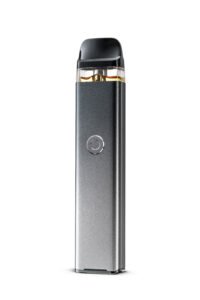Wheel alignment is the process of adjusting a vehicle’s alignment angles to correspond with the manufacturer’s specifications. It may also refer to alignment between the steering axis and the axle centerline, since steering alignment is a parameter in the alignment of a wheel.
Front-end alignment is a simplified alignment procedure in which alignment angles are set for camber, caster and toe-in only. Front-end alignment does not position wheels parallel to each other.
A wheel alignment, often referred to as a “wheel alignment service” or simply an alignment , is a system of adjustments applied to the steering and suspension of a vehicle in order to reduce and/or eliminate wear on its tires, as well as to restore the vehicle’s handling. Alignment angles such as camber (the angle between the tire and road surface) and toe (the alignment of the front tires relative to parallelism with the rear tires) are adjusted for proper alignment.
Alignments can be done statically by checking for excessive front-back movement while on a lift looking through a long tube at both wheels from 10–15 feet behind the car. Alignments are done dynamically on most new cars using alignment equipment. This alignment equipment will allow you to adjust your camber and caster while the vehicle is on a lift and will keep track of the alignment angles set through each alignment, so that when another alignment is completed, all settings can be reused. If you want to aligned your wheel then go to alignment near me.
There are many methods for measuring alignment angles:
A front-end alignment is a simplified alignment procedure in which alignment angles are set for camber, caster and toe-in only. Front-end alignment does not position wheels parallel to each other. Because of this limitation, there must always be some difference in the specifications of the left and right side configurations (for example if they are fitted with different size tires).
This “toe” is an adjustment at the front of the car that allows for proper alignment on the road. Toe alignment ensures that a car’s tires are pointing straight ahead and not angled in or out at the bottom.
Toe is adjusted by measuring the distance between the tire treads of both front tires from side to side. This measurement can be taken using one of many tools including string, laser alignment equipment, or just a tape measure. The goal here is to have both measurements as close to each other as possible without them actually touching (hence why lasers are used).
Camber alignment ensures that your vehicle’s wheels are set at an angle relative to the ground so they don’t wear down at different rates. When you drive down the road, each tire follows a slightly different path (one slightly closer to the road and one slightly further away), so your alignment should be set so that each tire is making even contact with the road.
How camber alignment is done: Using a specially designed alignment tool, measure the amount of “toe” in each front wheel and record it. Next, you’ll need to inflate all four tires to full inflation and place a piece of string against the current edge of your tire tread. The string needs to be taught but not stretched tight; it will act as a reference point for alignment. Measure the distance from the center of one bolt hole on an imaginary 90 degree wheel alignment system relative to how far it protrudes from under your car’s chassis by using a tape measure and record this distance.
Now it is time to adjust the alignment of your vehicle by adjusting each wheel in or out and up or down until these two measurements match. Be sure that you don’t change any of the alignment settings when adjusting one wheel – if you do, take note of how much it moves before moving on to adjusting another wheel. You might need someone who can drive while you crawl around under the car with a tape measure! When these measurements match, call it good and start driving!
Caster alignment ensures that your steering axle is pointing forward relative to your frame so that your steering wheel returns straight when released. The angle of caster alignment may be adjusted within certain limits according to design and construction and/or alignment specifications and requirements.
How caster alignment is done
There are several alignment tools available to help set caster alignment but once again a string can be used in a pinch. Start by placing the string against one of your front tires from the centerline of the rim to the edge, then measure how far it sticks out away from your car’s chassis. Now take that measurement and mark out an imaginary 90 degree alignment system on top of your tire, much like you did with camber alignment, and measure how far it protrudes from underneath your car’s chassis. Next, adjust caster alignment until these two measurements match up!
Discover more from https://en.wikipedia.org/wiki/Toe_(automotive)










